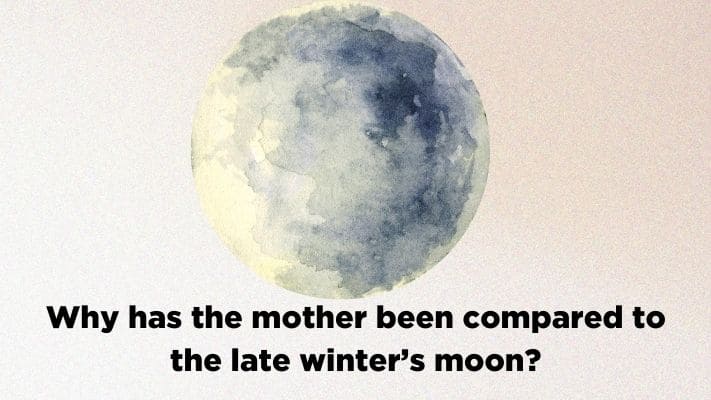Why has the mother been compared to the late winter’s moon?
The late winter’s moon is calm and hazy with a dim lustre. It loses its vitality and power. So the poetess compares her mother’s calm, colourless and withered face like the late winter’s moon. She has become weak, wan and ‘pale due to her age of sixty-six. She has lost her vitality.

How does the poetess describe the late winter's moon?
(a) Bright and vibrant
(b) Calm and hazy with a dim lustre
(c) Powerful and radiant
(d) Warm and inviting
Solution
(b) Calm and hazy with a dim lustre
Why does the poetess compare her mother's face to the late winter's moon?
(a) Because her mother is always awake at night
(b) Because her mother loves gazing at the moon
(c) Because both are calm and hazy with a dim lustre
(d) Because her mother's face changes with the seasons
Solution
c) Because both are calm and hazy with a dim lustre
Why has the poet brought in the image of the merry children spilling out of their homes?
The poetess talks of various stages of life. On one side there are merry children play and enjoy in the sun. They represent life, vigour, continuity, power, action and carefree life. On the other there is her aged mother. The continuity in the activities of life as well as spontaneous flow of life has been depicted by the merry children spilling out of their homes.

0 Comments